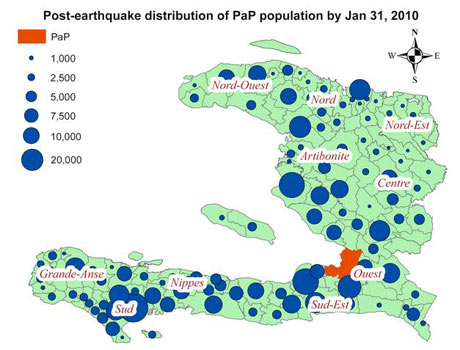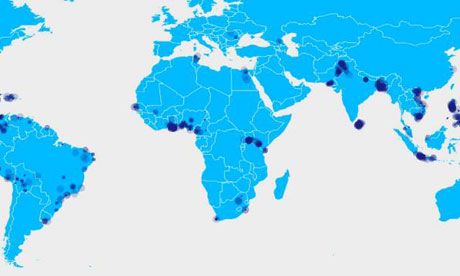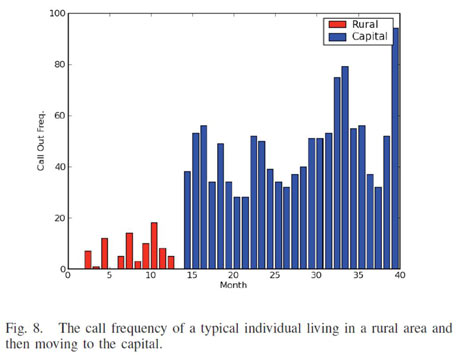The Guardian's Data Blog: Mobile phone data: the oil of the digital age
Blog Post
July 19, 2012
This piece was originally posted on The Guardian's Data Blog.
Three quarters of the world's more than six billion mobile phones are located in the developing world, and the ubiquity of these devices in under-served areas provides valuable digital traces of activity that have never existed before. In particular, there is an unprecedented and largely overlooked opportunity to harness this digital data for global development efforts. From tracking the outbreak of diseases to better understanding unrepresented populations, a few promising examples are coming to light, and this mobile phone data is even proving to offer lifesavings insights.
In the aftermath of the Haiti earthquake two years ago, the largest mobile phone network in Haiti provided anonymized mobile phone data to help coordinate relief efforts and quantify displaced populations.
Using the data, researchers estimated that more than 630,000 people had fled the capital of Port-au-Prince within 20 days of the earthquake. When Cholera struck nine months later, the mobile phone data was again used to focus relief efforts in areas with high-risk of new outbreaks.

Post-earthquake distribution of Port-au-Prince (PaP) population, from mobile phone data. Illustration: Research article
At the end of last year, the United Nations launched a Global Snapshot of Wellbeing. Instead of sending experts around the world to conduct household surveys, the project sent out questions via text messages to more than 5,000 people in 30 countries.
The questions ranged from "were you sick in the past 7 days?" to "if you had 15 dollars, what would you spend it on?" In one month, the survey collected over 65,000 responses from around the world (see a video tracking the responses here).

A snapshot from the UN video, which shows the speed and geographical distribution of responses to a mobile phone survey on wellbeing and interconnectedness Illustration: UN Global Pulse
Researchers are also utilizing mobile phone data to examine human behavior at an unprecedented rate and scale. Over the course of four years, anonymized data was collected from all 1.4 million mobile subscribers within an unidentified "small country".
When examining the data on call locations, recipients and purchasing trends, the researchers started to see a unique story unfolding: "In the city, social and economic interdependence becomes crucial, more utilitarian social relations develop, and great economic opportunities are available." The researchers go on to conclude: "We have found support, and quantified for the first time on a large scale, for arguments for the diversification and growth of personal networks as individuals live or move to large urban areas."

Change in mobile phone call frequency for an individual moving from a rural area to the capital Illustration: Report into rural and urban mobile phone usage
Mobile phone data is increasingly being seen as the oil of the digital age. According to estimates by the Mckinsey Global Institute, there is a $600 billion opportunity every year for businesses to use consumer's personal location data.
As mobile phones become more advanced and widespread, the mining of this data will only become more meaningful. While companies have jumped on the opportunity and established refineries to reap the benefits of the data, global development actors are just beginning to break the surface.